1937 Buffalo nickels are very prevalent and, at most, have a marginally higher value than their face value. However, your numismatic collection can fetch a fortune for its significance, melt value, and misstruck errors.
For today’s article, let us learn the value of a 1937 Buffalo nickel.
What Is the 1937 Buffalo Nickel Made Of?
Except for the coin’s reverse, the Type II 1937 Buffalo nickel resembles the Type I of 1913. In the 1937 version, the bottom of the reverse has been redesigned. The buffalo, formerly standing on elevated ground, is now on a line or a plane.
The word FIVE CENTS, previously written on the mound, is now concealed by a recessed area below the line, guarding it against deterioration. The Buffalo nickel was produced using this style from 1913 to the end of the Buffalo motif in 1938.
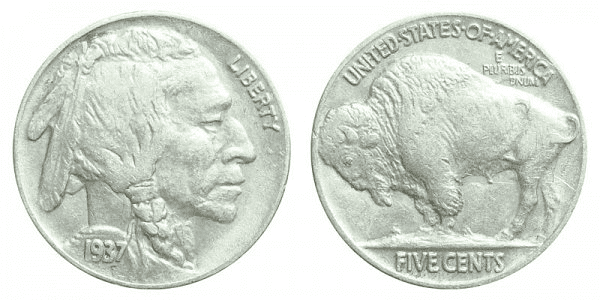
James Earle Fraser’s bust of the Native American Head nickel design appears on the obverse of the 1937 Buffalo nickel. It also features the word LIBERTY in front of the Native American Head and the year of minting on the Native American Head’s shoulder area. The designer’s initial F is seen below the year of minting. You can notice a line border surrounding the coin, separating some areas from others.
On the reverse, we can see the bison design created by Fraser displayed in the middle. The denomination FIVE CENTS is placed under the bison design, and the mint mark (if available) is struck under it. The words “UNITED STATES OF AMERICA” are arching on top with the Latin phrase E PLURIBUS UNUM placed on its lower-right portion. Similar to the coin’s obverse, we can also see that a line border surrounds this side of the coin.
1937 Buffalo Nickel Varieties
The 1937 Buffalo nickel has a face value of $0.05 or five cents and has a metal composition of 75% Copper and 25% Nickel. This plain-edged coin has a diameter of 21.20 millimeters and weighs 5.00 grams.
Here is a summary of the Buffalo nickel varieties minted in 1937:
| Variety | Mint Location | Mintage |
| 1937 D Buffalo Nickel | Denver | 17,826,000 |
| 1937 P Buffalo Nickel | Philadelphia | 79,480,000 |
| 1937 S Buffalo Nickel | San Francisco | 5,635,000 |
| 1937 Proof Buffalo Nickel | Philadelphia | 5,769 |
| Total | 102,946,769 |
1937 D Buffalo Nickel
Edge: Plain
Mint Mark: D
Place of minting: Denver
Year of minting: 1937
Face Value: $0.05 (five cents)
Price: $0.22 to $3.30 (circulated condition)
Quantity produced: 17,826,000
Designer: James Earle Fraser
Composition: 75% Copper, 25% Nickel
Mass: 5 grams
Diameter: 21.20 mm
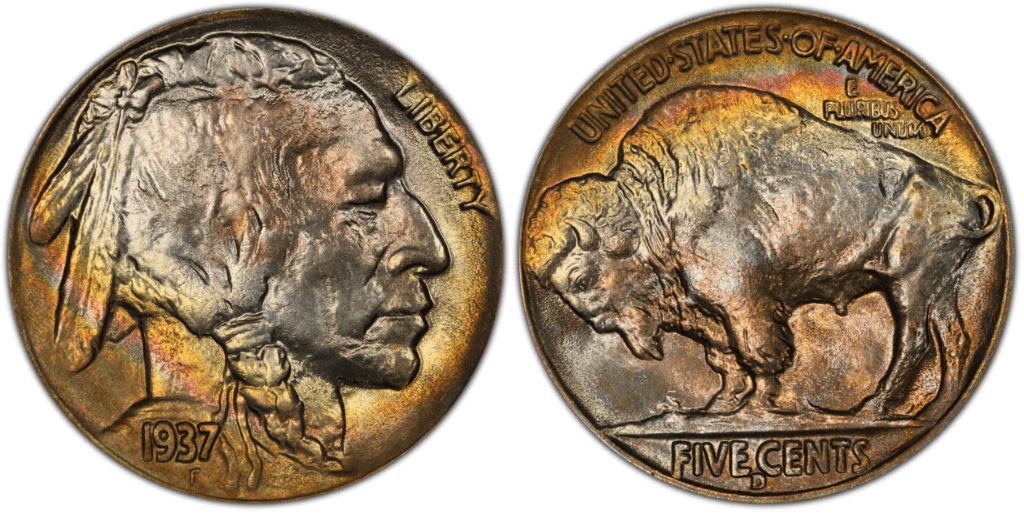
In most grades, the 1937 D Buffalo nickel is extremely common. Thousands of specimens of this particular issue have been confirmed in MS64, MS65, and MS66 conditions. However, in the MS67 condition, the coin’s population drastically decreases.
Fortunately, it is in MS68 condition, wherein this coin shines! One of the two PCGS MS68 samples sold for an astounding $35,250 in March 2015, breaking all previous records for the period and essentially for any late-vintage Buffalo nickel.
Thousands of Mint State coins from the numerous sequestered rolls dispersed during the 1950s and 1990s still contain 1937 Denver Mint nickels. There may still be a few original rolls in older collections; however, it is unlikely that any have survived decades of encapsulation.
Collectors shouldn’t skimp on this common date, although most coins were produced on overworked dies that showed extensive erosion lines and loss of detail. Another coin from the Denver Mint, rich in repunched mintmark variants, may have been made with transitional dies for the 1936 or 1938 coinage.
1937 P Buffalo Nickel
Edge: Plain
Mint Mark: no mint mark
Place of minting: Philadelphia
Year of minting: 1937
Face Value: $0.05 (five cents)
Price: $0.22 to $3.30 (circulated condition)
Quantity produced: 79,480,000
Designer: James Earle Fraser
Composition: 75% Copper, 25% Nickel
Mass: 5 grams
Diameter: 21.20 mm
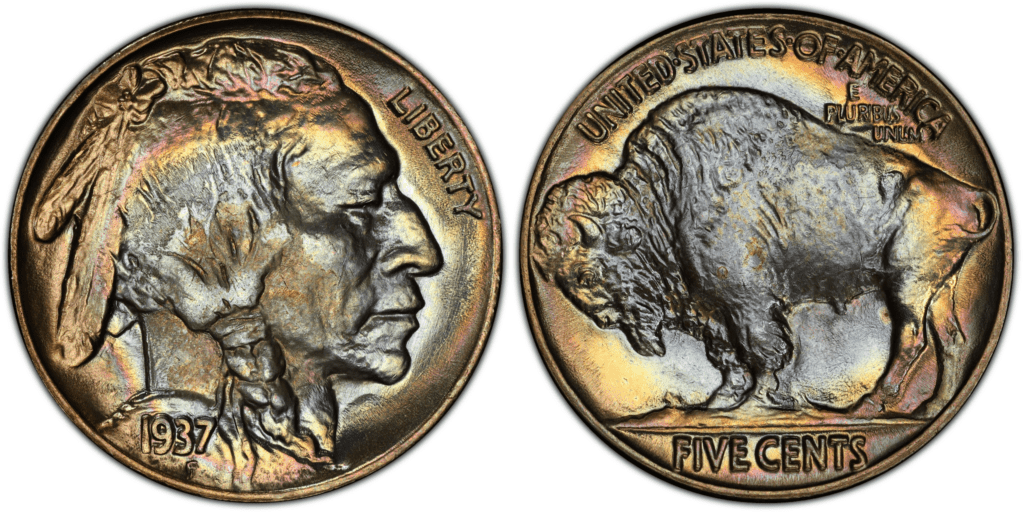
The most prevalent Buffalo nickel in circulating grades and the second most prevalent in mint state and Gem condition is the 1937 Buffalo variant (after the 1938 D variant). This coin’s strike is typically crisp, and its luster frosty.
Despite having a lower mintage than the 1936 P issue, the 1937 P Buffalo nickel is more prevalent in top grades. The 1937 Buffalo nickel issue from Philadelphia and 1938 D are among the most sought-after issues for type collectors due to the sharp strikes and brilliant shine that characterize many of the survivors.
Obverse and reverse single doubled-die variations exist, making the latter easier to distinguish. It is astonishing, however, that no further examples have been discovered, given the massive mintage that required hundreds of dies.
1937 S Buffalo Nickel
Edge: Plain
Mint Mark: S
Place of minting: San Francisco
Year of minting: 1937
Face Value: $0.05 (five cents)
Price: $0.22 to $3.30 (circulated condition)
Quantity produced: 5,635,000
Designer: James Earle Fraser
Composition: 75% Copper, 25% Nickel
Mass: 5 grams
Diameter: 21.20 mm
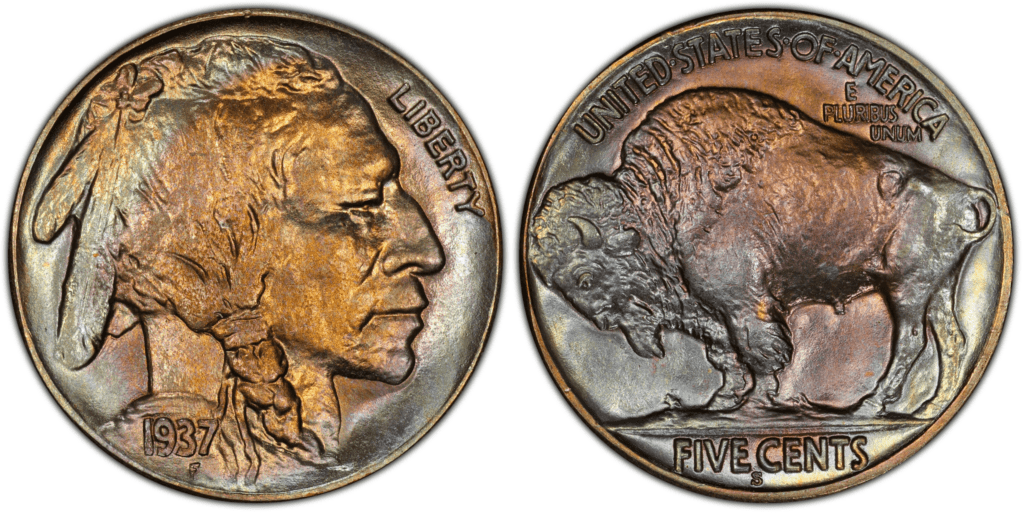
The most prevalent Buffalo nickel from the San Francisco Mint is the 1937 S variant. For a 1937 S Buffalo nickel, the strike is often decent, and the luster is typical of the gray brilliant variety.
This S-Mint Buffalo Nickel is unquestionably the best in terms of overall brilliance, surfaces, and strike. Since this date was still being printed by banks a year or two later and was so hoarded by collectors and speculators, it appears to be the most abundant surviving Mint State pieces.
Many repunched mintmark types for 1937 S nickels are less noticeable than those from the preceding two years and have received little attention.
1937 Proof Buffalo Nickel
Edge: Plain
Mint Mark: no mint mark
Place of minting: Philadelphia
Year of minting: 1937
Face Value: $0.05 (five cents)
Price: $0.22 to $3.30 (circulated condition)
Quantity produced: 5,769
Designer: James Earle Fraser
Composition: 75% Copper, 25% Nickel
Mass: 5 grams
Diameter: 21.20 mm
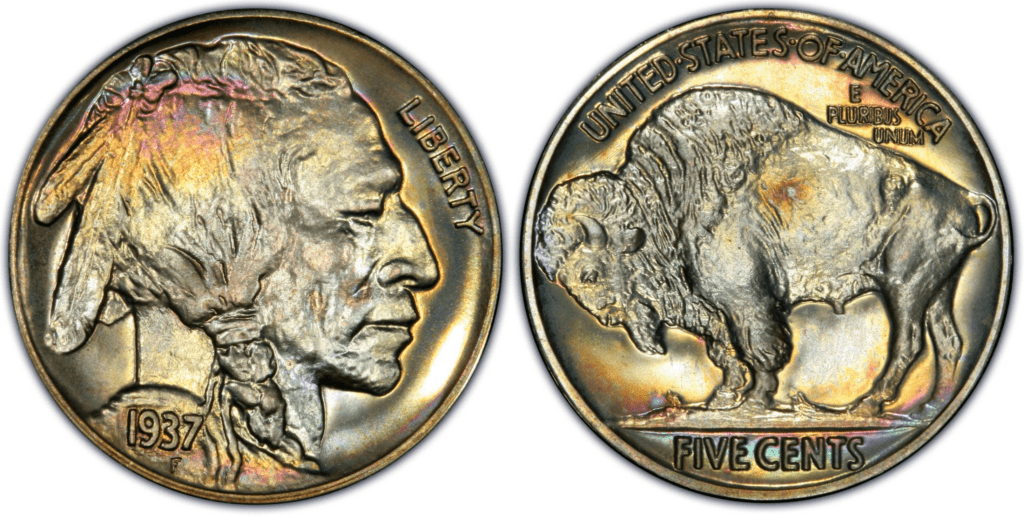
Despite the fact that every single 1937 proof nickel was made with a brilliant finish, only a very small percentage of them have enough contrasting texture on their devices to be called Cameo. This year holds the record for the largest production of proof Buffalo nickels for the entire series. Although many copies of this issue exist, the great demand for type collectors keeps the coin’s prices high.
Most of these proofs are found in the PR64 to PR67 range, and more than half are known in PR65 or greater. A few dozen have received PR68 certification from PCGS and NGC, and PCGS has graded two as PR69. The Buffalo nickel’s proof production ceased in 1937, and the Jefferson nickel, which exclusively represented the proof nickels of 1938, was introduced the following year.
List Of 1937 Buffalo Nickel Errors
Doubled Die Error
A doubled die is a form of die variation on a coin. It usually occurs when an error during the hubbing process doubles the design on the die. When a hub strikes the die at a slightly different angle, this will result in the design appearing on the die twice or sometimes even three or four times.
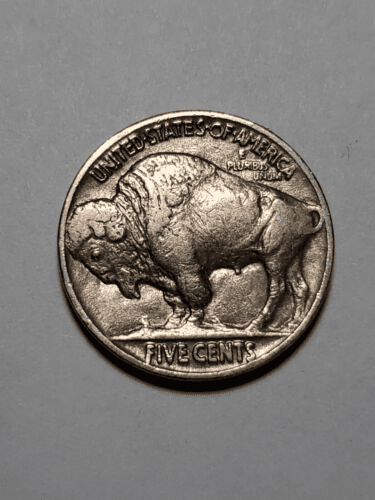
Struck Through Error
When a foreign object makes an impression on a coin by being struck into it, the result is a “struck-through” error. When the nature and origin of the foreign object are clearly visible, such errors are always more convincing.
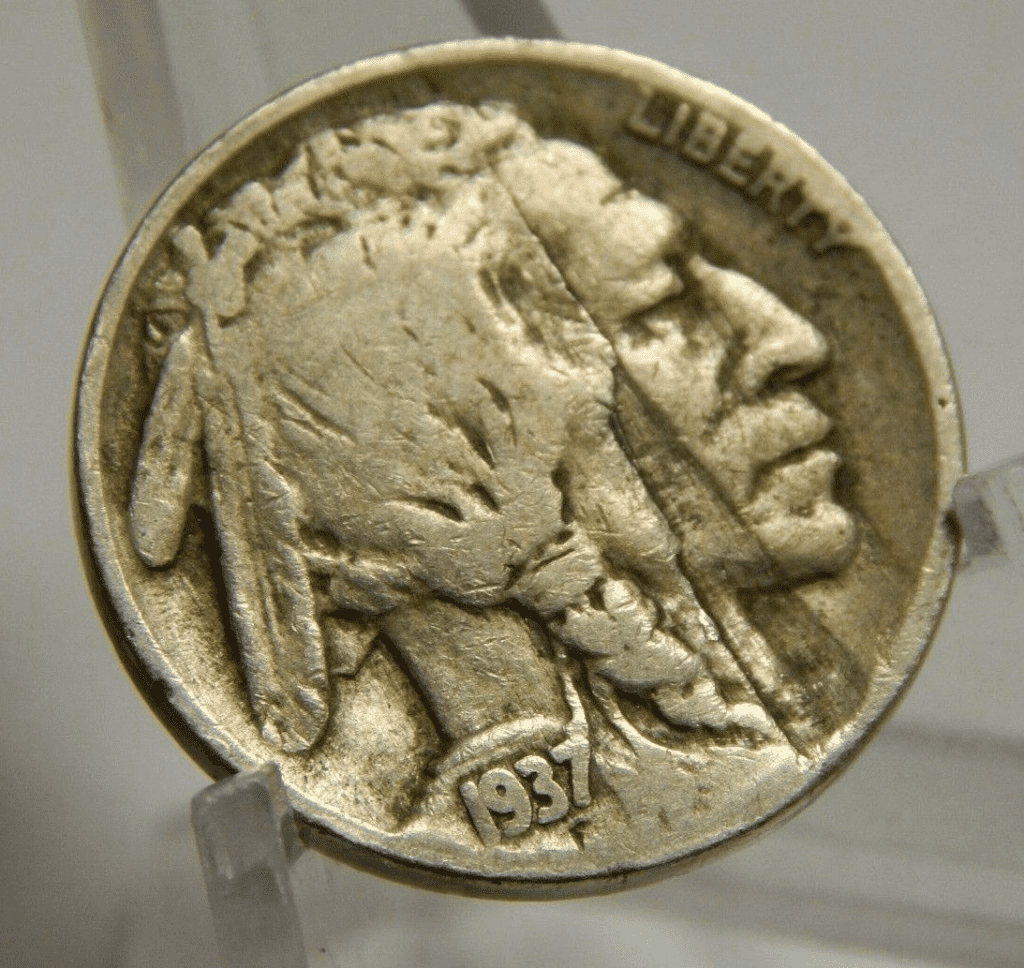
Repunched Error
When the letter punch used to place the mint mark into the working die leaves two or more offset impressions, the result is a repunched mintmark variant. The impressions almost always overlap. A completely separate secondary mintmark is extremely hard to find.
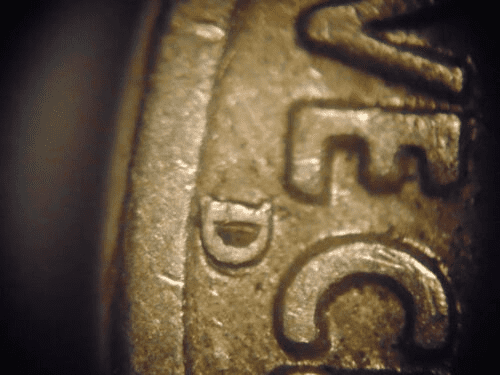
How Much Is The 1937 Buffalo Nickel Worth Today?
Head to the Numismatic Guaranty Company (NGC) website. You can check their Price Guide and see that a 1937 Buffalo nickel’s worth (as of January 2023) is estimated between $0.50 and $20 in circulated condition. However, this value significantly increases when the coin is sold on the open market, especially in pristine and uncirculated conditions.
For instance, you can make as much as $10,000 for selling a 1937 D Buffalo nickel in pristine uncirculated condition. You can make less for the ones minted in Philadelphia at only $8,000, but that’s still worth a lot for a five-cent coin! The 1937 S Buffalo nickel takes the highest honor at $22,500 if sold on the open market.
How Coins are Graded
The Sheldon Scale is used by numismatists to provide a numerical value to coins. The Sheldon Scale goes from poor (P-1) to perfect mint state (P-1) (MS-70). Coins were originally evaluated using words to reflect their condition (Good, Fair, Excellent, Etc.). Unfortunately, coin collectors and dealers had different ideas about what each of these terms represent.
Professional numismatists joined together in the 1970s and established CoinGrading standards. These numismatists now assign grades at key places on the seventy-point scale, using the most regularly utilized numeric points in conjunction with the original adjective grade. The following are the most common coin grades:
- (P-1) Poor – Indistinguishable and probably damaged; if used, must have a date and mintmark; otherwise, rather battered.
- (FR-2) Fair – Nearly smooth, but without the damage that a coin graded Poor often possesses. The coin must have enough detail to be identified.
- (G-4) Fair – Inscriptions have merged into the rims in some areas, and important elements have been mostly erased.
- (VG-8) Very Good- A little weathered, but all of the primary design elements are visible, albeit faintly. There is little if any, central detail left.
- (F-12) Good – The item is very worn, yet the wear is even, and the overall design details stand out clearly. Rims are almost completely isolated from the field.
- (VF-20) Very Fine – Moderately weathered, with some finer features still visible. The motto or all letters of LIBERTY are readable. Both sides of the coin have entire rims that are separated from the field.
- (EF-40) Extremely Fine – Gently used; all gadgets are visible, and the most important ones are bold. The finer details are bold and clear, however, light wear may be seen.
- (AU-50) Uncirculated – Slight evidence of wear on the coin’s design’s high points; may have contact marks; eye appeal should be adequate.
- (AU-58) Uncirculated Choice – Slight traces of wear, no severe contact marks, almost full mint shine, and great eye appeal.
- (MS-60) Mint State Basal – Strictly uncirculated; no indication of wear on the coin’s highest points, but an unsightly coin with reduced luster, visible contact marks, hairlines, and other flaws.
- (MS-63) Mint State Acceptable – Uncirculated, but with contact scratches and nicks, little reduced shine, but otherwise appealing appearance. The strike is weak to average.
- (MS-65) Mint State Choice – Uncirculated with great mint shine, very little contact blemishes, and exceptional eye appeal. The strike is unusually severe.
- (MS-68) Mint State Premium Quality – Uncirculated with superb luster, no obvious contact marks to the naked eye, and exceptional eye appeal. The strike is quick and appealing.
- (MS-69) Almost Perfect Mint State – Uncirculated with perfect brilliance, a sharp and appealing strike, and extremely good eye appeal. A near-perfect coin with minor imperfections in the planchet, strike, and contact markings (seen only under 8x magnification).
- (MS-70) Mint State Perfect – Under 8x magnification, there are no tiny imperfections discernible; the strike is crisp, and the coin is perfectly centered on a beautiful planchet. Rarely seen on a coin, this coin is bright and whole, with original luster and exceptional eye appeal.
Where To Buy Or Sell 1937 Buffalo Nickel?
The most practical approach to buying or selling 1937 Buffalo nickel is to go to online auction sites and other online markets. Many sellers put bids on websites such as eBay, Etsy, Amazon, and Craigslist. However, you can buy or sell your 1937 Buffalo nickels at the coin and antique shops. But finding one there may be more difficult.
It is also important to seek assistance from reputable coin grading service providers, like PCGS and NGC, if you need advice on where and how to buy or sell your 1937 Buffalo nickels.
FAQs
What is the error on the 1937 Buffalo nickel?
Only the Denver Mint coins include the 1937 Buffalo nickel 3 Legs error. It can be seen on the coin’s reverse, notably on the Buffalo’s front legs. The right leg is hardly discernible due to a minting mistake. The buffalo in the design has three legs because of this. With this error, you would be extremely fortunate to own a 1937 Buffalo nickel.
How much is a 1937 3-legged buffalo nickel worth?
The NGC Price Guide estimates the value of a 1937 Buffalo LEGS nickel minted at Denver to be between $350 and $1,950 in circulated condition. However, if you sell it on the open market, this coin could make you as much as $110,000 in pristine and uncirculated condition.
What makes a 1937 buffalo nickel valuable?
Suppose you have a 1937 Buffalo nickel that is in pristine, uncirculated condition. In that case, you can make as much as $8,000 (Philadelphia Mint), $10,000 (Denver Mint), $22,500 (San Francisco Mint), and a whopping $110,000 (Denver Mint, 3-legged variant) if you sell it on the open market.
Is a 1937 buffalo nickel made of silver?
No. The 1937 Buffalo nickel has a metal composition of 75% Copper and 25% Nickel.
